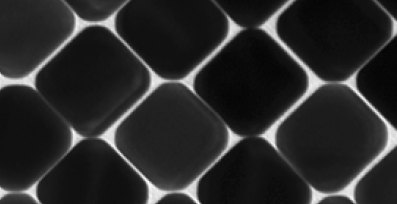All About Gold Nanocubes
Definition, Properties, Uses and Applications
Gold nanocubes have garnered significant attention due to their unique properties and potential applications in various fields. The high photoluminescence yield of gold nanocubes makes them suitable for cell imaging and photothermal therapy (Wu et al., 2009). This is attributed to their 4 x 10(-2) PL yield, which is about 200 times higher than that of gold nanorods. The use of gold nanocubes in cell imaging of human liver cancer cells and human embryo kidney cells has been successfully demonstrated (Wu et al., 2009). Additionally, the synthesis of gold nanocubes has been achieved through various methods, including seed-mediated synthesis and electrochemical techniques (Wu et al., 2010; Huang et al., 2006). These methods have allowed for the controlled synthesis of gold nanocubes with well-defined crystal structures and monodispersed size and shape (Chen et al., 2011). Furthermore, the versatility of gold nanocubes has been extended to include applications in catalysis, contrast enhancement in biomedical imaging, photothermal therapy, and drug delivery (Zhang et al., 2010).
The shape evolution of gold nanocrystals has been systematically observed, leading to the synthesis of not only nanocubes but also nanorods and nanostars (Sun et al., 2008). Moreover, the ordering of gold nanostructure assemblies has been found to be highly dependent on the shape and size of the gold nanostructures, including nanorods, nanocubes, polyhedra, and bipyramids (Tian et al., 2008). The controlled synthesis of icosahedral gold nanoparticles has also been achieved, demonstrating their surface-enhanced Raman scattering property (Kwon et al., 2006). Additionally, the stability of gold nanocubes under electron beam irradiation has been addressed through the use of molecular coatings, further enhancing their potential applications (Tan et al., 2017).
The optical properties of gold nanocubes have been extensively studied, with the extinction cross section being dominated by the absorption cross section, particularly as the width of the nanocubes increases (Alsawafta et al., 2012). Furthermore, the shape and crystal-plane effects of nanoscale ceria on the activity of Au-CeO2 catalysts have been investigated, highlighting the strong shape effect of CeO2 on the water-gas shift reaction activity of the catalysts (Si & Flytzani‐Stephanopoulos, 2008). These findings underscore the significance of the shape and size of gold nanocubes in influencing their properties and applications.
In conclusion, gold nanocubes exhibit unique properties that make them promising candidates for a wide range of applications, including cell imaging, photothermal therapy, catalysis, and biomedical imaging. The controlled synthesis and systematic shape evolution of gold nanocubes have further expanded their potential uses, while the stability of gold nanocubes under various conditions has been addressed, paving the way for their practical applications in diverse fields.
Go here for Nanopartz Gold Nanocubes
References:
Alsawafta, M., Wahbeh, M., & Truong, V. (2012). Simulated optical properties of gold nanocubes and nanobars by discrete dipole approximation. Journal of Nanomaterials, 2012, 1-9. https://doi.org/10.1155/2012/283230
Chen, H., He, C., Wang, C., Lin, M., Mitsui, D., Eguchi, M., … & Gwo, S. (2011). Far-field optical imaging of a linear array of coupled gold nanocubes: direct visualization of dark plasmon propagating modes. Acs Nano, 5(10), 8223-8229. https://doi.org/10.1021/nn2029007
Huang, C., Chiu, P., Wang, Y., Chen, W., & Meen, T. (2006). Synthesis of the gold nanocubes by electrochemical technique. Journal of the Electrochemical Society, 153(8), D129. https://doi.org/10.1149/1.2203931
Kwon, K., Lee, K., Lee, Y., Kim, M., Heo, J., Ahn, S., … & Han, S. (2006). Controlled synthesis of icosahedral gold nanoparticles and their surface-enhanced raman scattering property. The Journal of Physical Chemistry C, 111(3), 1161-1165. https://doi.org/10.1021/jp064317i
Si, R. and Flytzani‐Stephanopoulos, M. (2008). Shape and crystal‐plane effects of nanoscale ceria on the activity of au‐ceo2 catalysts for the water–gas shift reaction. Angewandte Chemie, 47(15), 2884-2887. https://doi.org/10.1002/anie.200705828
Sun, J., Guan, M., Shang, T., Gao, C., Xu, Z., & Zhu, J. (2008). Selective synthesis of gold cuboid and decahedral nanoparticles regulated and controlled by cu2+ ions. Crystal Growth & Design, 8(3), 906-910. https://doi.org/10.1021/cg070635a
Tan, S., Bosman, M., & Nijhuis, C. (2017). Molecular coatings for stabilizing silver and gold nanocubes under electron beam irradiation. Langmuir, 33(5), 1189-1196. https://doi.org/10.1021/acs.langmuir.6b03721
Tian, M., Kou, X., Chen, H., Wang, T., Tam, H., Cheah, K., … & Wang, J. (2008). Ordered gold nanostructure assemblies formed by droplet evaporation. Angewandte Chemie, 47(50), 9685-9690. https://doi.org/10.1002/anie.200803642
Wu, H., Kuo, C., & Huang, M. (2010). Seed-mediated synthesis of gold nanocrystals with systematic shape evolution from cubic to trisoctahedral and rhombic dodecahedral structures. Langmuir, 26(14), 12307-12313. https://doi.org/10.1021/la1015065
Wu, X., Tian, M., Wang, X., Wang, P., Wang, J., & Chen, J. (2009). High-photoluminescence-yield gold nanocubes: for cell imaging and photothermal therapy. Acs Nano, 4(1), 113-120. https://doi.org/10.1021/nn901064m
Zhang, Q., Li, W., Wen, L., Chen, J., & Xia, Y. (2010). Facile synthesis of ag nanocubes of 30 to 70 nm in edge length with cf3cooag as a precursor. Chemistry - A European Journal, 16(33), 10234-10239. https://doi.org/10.1002/chem.201000341

